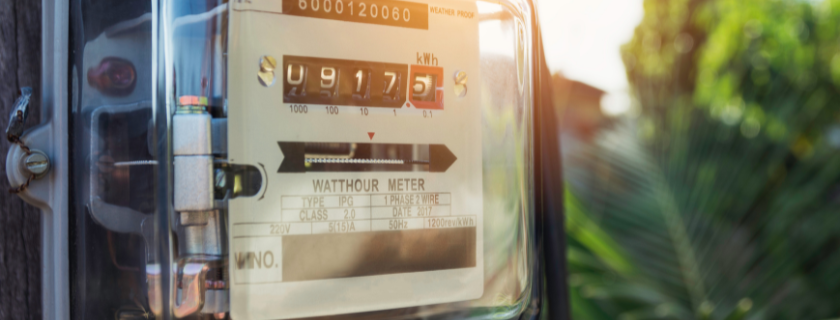Advanced Smart Metering solutions have grown by leaps and bounds in recent years. This is more or less a buzzword today, especially in the water industry network. The solution is used exhaustively by water utilities. The primary need for Smart Metering options is to boost efficiency. Recent advancements have ensured that the metering infrastructure gets the attention it deserves.
Why is this solution important?
- Firstly, the metering infrastructure saves engineers from walking to every meter. They are no longer expected to read and write numbers manually, meaning homeowners are no longer expected to wait for door-to-door meter reading visits.
- Secondly, Smart Metering technology reduces hassles in load management and becomes very easy to plan systems that are likely to survive in challenging environments. Whether an urban centre or a rural plain – the Smart Meters are bound to work accurately and quickly. These systems support two-way communication also. When water is monitored with this accuracy, the chances of wastage and unexpected catastrophes are vastly reduced.
Different types of Smart Metering
There are two interesting types of Smart Metering solutions: AMI and AMR.
By definition, AMR represents Automated Meter Reading. It is a technology that uses devices to collect water and data from the actual water meter. These systems can be accessed via drive-by or walk-by methods. At the encoder register, you will find an endpoint attachment. The endpoint is designed for capturing alarm and water flow data. Then an individual needs to walk by and collect the data from the device. Once the data is collected successfully, it will be transferred into a database. This is where issues are analyzed and customer bills generated.
The advanced metering infrastructure combines data management methods, communication networks, and water metrics. This supports two-way communication between utilities, data meters, and endpoints. The AMI doesn’t expect an individual to collect the data. The system is advanced enough to transfer data to designated devices. Engineers can define the time gap between two automatic transmissions. Utilities receive the meter readings from fixed networks. Once again, the data is used for monitoring water usage efficiently and sustainably.
Nebulae Infrastructure for Smart Metering
Regarding Nebulae infrastructure for Smart Metering, the nodes play an essential role. The Nebulink Nodes are broad components in the entire architecture. They are responsible for providing the internet connectivity required by the devices, sensors, and other equipment. The node can be pre-programmed to heal, configure, and even ensure network sustainability. This is how it supports quick and easy deployment. Even when the metering area is large, the Nebulink Node doesn’t face many issues. It incurs minimum maintenance and can resolve broken pathways quickly too. On the whole, the node architecture of Nebulae is responsible for minimum run time failures, quick data recovery, and a protected network.
Meanwhile, there is another component crucial for smart metering. And that would be the Data Concentrator Unit, alias DCU. This is a continuous polling device; any data received is stored within the DCU. At periodic intervals, the data gets transferred to the Management system. Nebulae maintains an intelligent technology that helps spot the insertion and removal of meters. All the tasks are entirely programmable. This means you don’t need to stick to the start list of operations.
How can NebuLink Gateways be used for Smart Metering?
The RS484 is an essential component in collecting and sending data. Any water device that needs to be monitored and from which data needs to be collected is linked to the RS485. Or the device has to be connected to an optical port. It is vital to ensure that the optical port can collect data from the meter. For this, it should be able to access the meter. Data from the meters are stored temporarily in a device and are sent to the cloud at periodic intervals. The duration between two updates can be configured easily. This is what makes solutions offered by the Nebulae interesting.
Meanwhile, you need to realize that retrofitting doesn’t work well all the time. One of the reasons behind this would be the unidirectional flow of data. Though the smart metering technology claims to be two-way, data often flows in a single direction. Also, there needs to be an adequate internet connection for the entire operation to be completed on time. Every node and meter in the architecture needs access to the internet.
Even though the sound of smart metering appears sophisticated, it is important to understand that this technology does not support network interface cards at all levels.
Role of NebuLink Gateways in AMI solution as DCU
Now, you might be curious to know if the Nebulae Gateway is essential. Well, the answer to this question is in the affirmative. Data can be extracted from both wireless and wired architectures. Meanwhile, data is gathered and sent to devices that support multiple technologies. This is why common and simple means like email are used for transmitting data.
When the DCU is used, each meter and node doesn’t need internet access. As mentioned, the DCU is configured to store data before sending it to the cloud temporarily. After all, the DCU represents the data concentration unit. The point of data collection would be smart wireless or wired meters. And all the data collected is sent to a head-end system, which technicians treat as a dashboard.
If the metering solution is meant for a country like India, brands can opt for the NLG7600. This equipment supports both the owner and consumer and can handle DLMS IS 15959 part 2. Thus, it is a perfect choice for smart metering needs in India. Moreover, a single DCU can be configured to extract data from 60 to 100 meters; the only limitation would be the distance between two meters.







